Acne Treatment in Fort Collins, CO
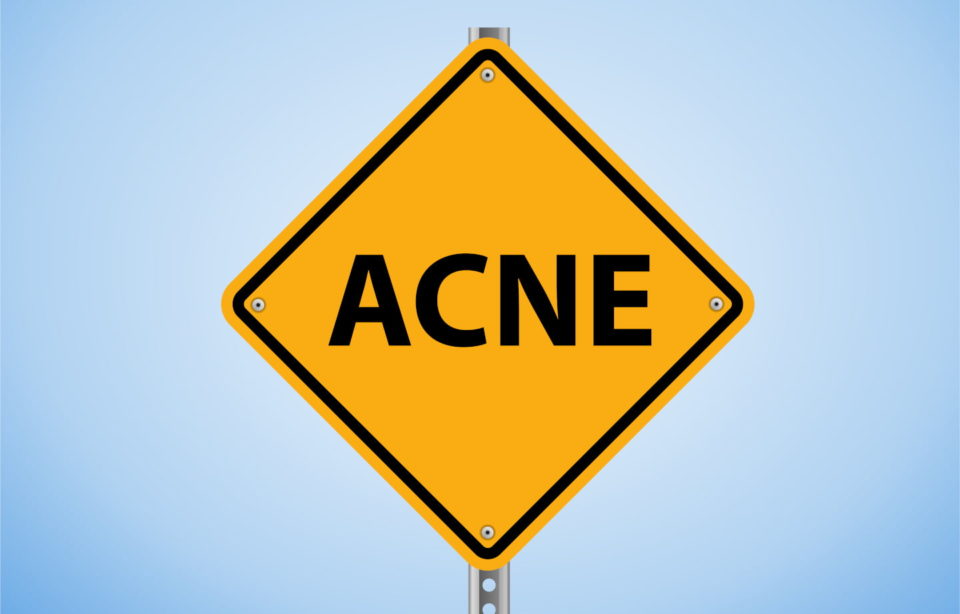
Acne Symptoms
Acne is the most common skin condition in the United States. Acne occurs when your hair follicles become plugged with oil and dead skin cells. Acne typically appears on your cheeks, chin, forehead, neck, chest, upper back, shoulders, and buttocks…
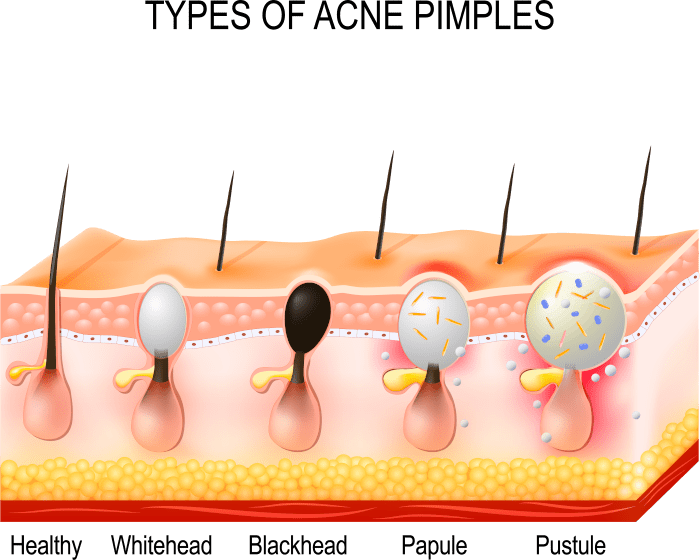
- Whiteheads (closed plugged pores)
- Blackheads (open plugged pores)
- Papules (small red, tender bumps)
- “Pimples” (aka pustules), which are papules with pus at their tips
- Nodules (large, solid, painful lumps beneath the surface of the skin)
- Cysts (painful, pus-filled lumps beneath the surface of the skin)
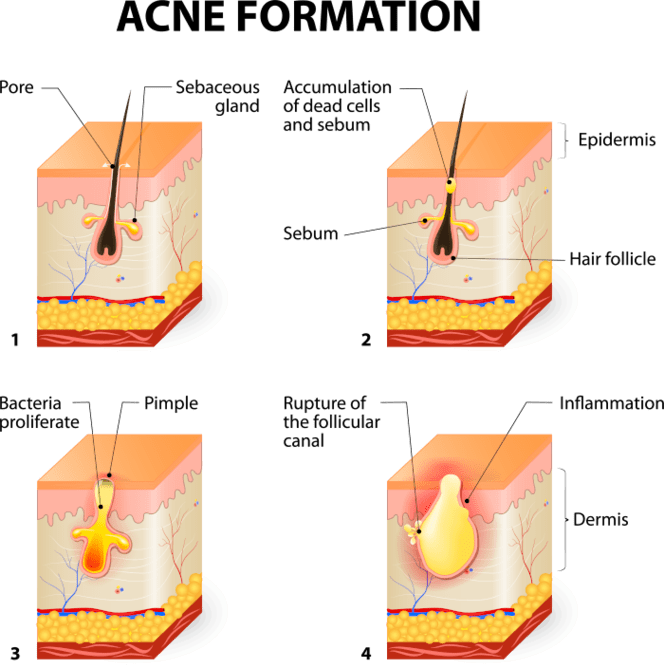
Acne Causes
Acne appears when a pore in your skin clogs. Normally, dead skin cells rise to surface of the pore, and the body sheds the cells. When the body makes oil, called sebum (see-bum), the dead skin cells can stick together inside the pore. Instead of rising to the surface, the cells and oil become trapped inside the pore, causing it to clog.
If the pore remains open, the clogged material that is exposed to air will turn black over time, coining the phrase ‘blackhead’. This is a result of a chemical reaction. Blackheads are not dirt. If the pore pinches at the top and air is not allowed in, a small white lesions will appear, named a ‘whitehead’. If inflammation occurs around the clogged pore, a red ‘pimple’, nodules or cyst may form.
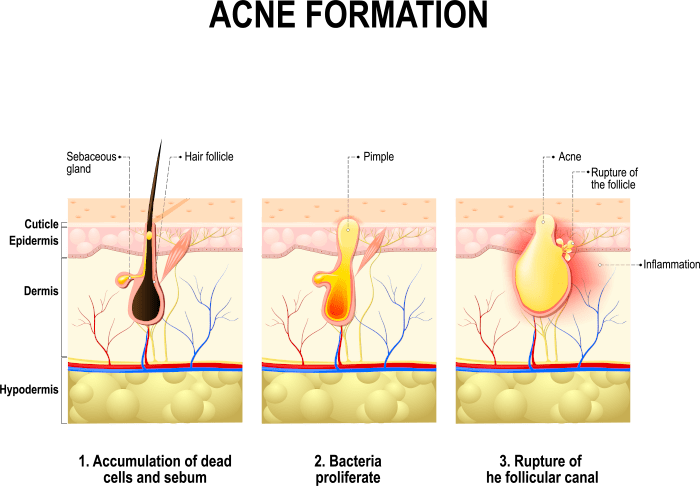
Sometimes bacteria that live on our skin, p. acnes, also get inside the clogged pore. Inside the pore, the bacteria have a perfect environment for multiplying very quickly. Heavy loads of bacteria can cause lesions to become more inflamed. If the inflammation goes deep into the skin, an acne cyst or nodule appears.
Men and women both produce hormones called androgens. Androgens stimulate oil glands to produce more oil. These increase oil production and can increase the likelihood of follicles becoming clogged.
Overall, four main factors cause acne:
- Excess oil production
- Hair follicles clogged by oil and dead skin cells
- Bacteria
- Excess activity of a type of hormone (androgens)
Acne Myths
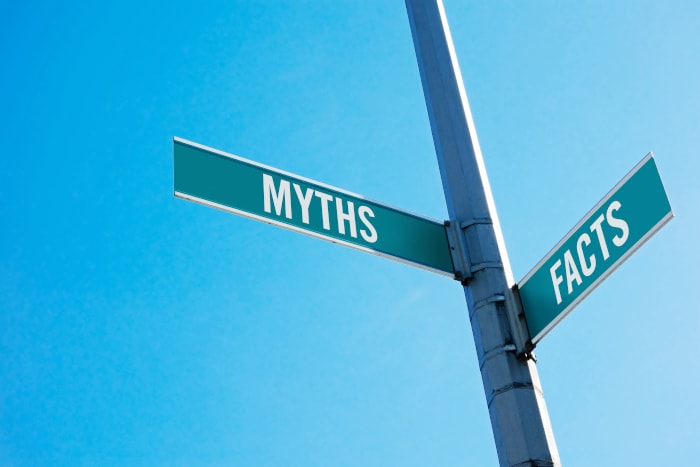
Myth #1 “It’s all from my diet.”
There are many food myths surrounding acne. For example, eating greasy food has little to no effect on acne. But working in a greasy area, such as a kitchen with fried food, can cause acne because the oil splashed onto the skin can clog pores. In some studies, milk, especially skim milk, has been linked to worsening acne, but it is not a major cause for most people. A more clear link is found between simple sugars and acne. This may be the reasoning behind the chocolate myth. While chocolate alone does not cause acne, eating regular sweets and drinking sugary beverages has been well proven to increase total body inflammation and can worsen acne.
Myth #2 “I just need to wash my face more.”
Acne isn’t caused by dirty skin and lack of adequate hygiene is rarely a problem. In fact, scrubbing the skin too hard or cleansing with harsh soaps or chemicals irritates the skin and can make acne worse. Your face only needs to be washed 1 to 2 times a day, with a facial cleanser and your fingertips, not with a harsh detergent or wash cloth. This should take place after sweating or vigorous exercise, at the end of the day to remove make-up, or after being exposed to greasy environments, such as fry kitchens. If you wish to exfoliate, only very gentle, low abrassion polishes should be used on the skin, and only 2 to 3 times a week.
Myth #3 “I should not wear make-up if I have acne.”
Cosmetics don’t necessarily worsen acne, especially if you use oil-free makeup that doesn’t clog pores (“noncomedogenic”) and remove makeup every night. Do not feel the need to quit all foundation or powders. Simply check the label. Do make sure you clean your make-up brushes on a regular basis so you do not increased the spread of acne causing bacteria. The same is true for sunscreens, moisturizers, and even hair care products. Select oil-free products only for use on or around your face or acne prone areas.
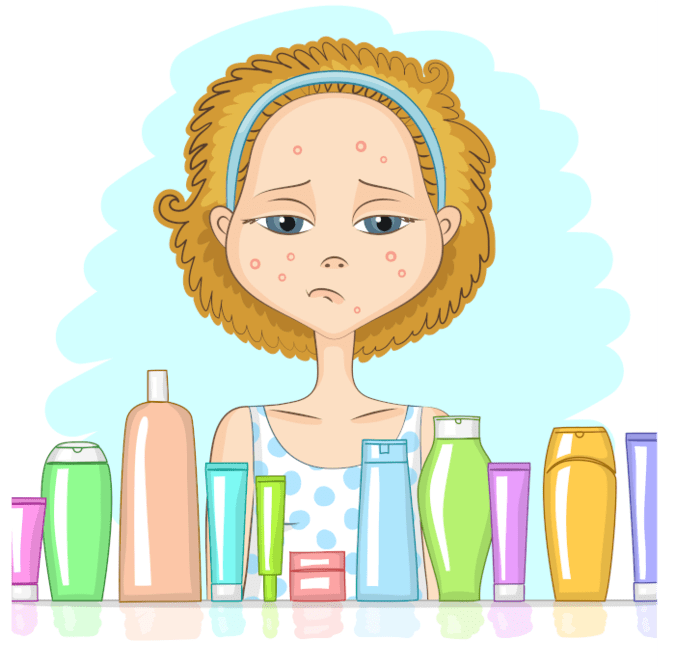
Acne Can Cause More Than Blemishes
Studies show that people who have acne can have:
- Low self-esteem: Many people who have acne say that their acne makes them feel bad about themselves. Because of their acne, they do not want to be with friends. They miss school and work and absenteeism can become a problem because of their acne.
- Depression: Many people who have acne suffer from more than low self-esteem. Acne can lead to a medical condition called depression or cause worsening of already existing depression. A team approach with your dermatologist, primary care physician, or even psychiatrist may be needed.

- Dark or red spots on the skin: Some skin tones are prone to dark or red spots that appear when the acne heals. It can take months or even years for discoloration to slowly fade and disappear.
- Scars(permanent): Some individuals are prone to scaring from their acne lesions. This is more common with severe acne. Another frequent cause of scaring is picking at blemishes. These scars can be prevented with early treatment and a strong commitment to your acne regimen. If you notice pitting scars when your pimples heal, if your child develops acne at a young age, or if someone in your family had scaring acne, be sure to contact a dermatologist early. Treating acne early can prevent scars.
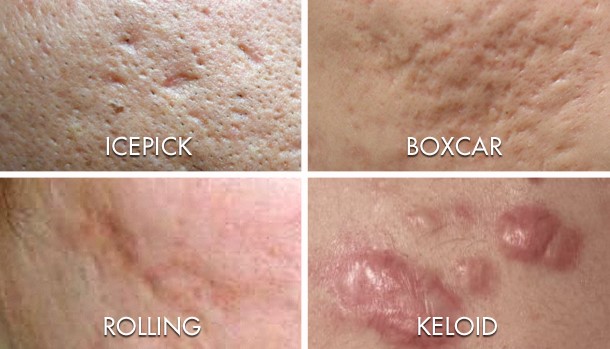
Acne Scar Treatment
If acne scars bother you, safe and effective treatment is available. Treatment can diminish acne scars that cause depressions or elevations in the skin.
Treatments include laser treatments, minor skin surgeries, chemical peels, and fillers. A dermatologist or a dermatologic surgeon can perform these treatments in a medical office.
Before getting treatment for acne scars, it is important to get your acne under good control. New acne breakouts can lead to new acne scars.
There are many different types of acne scars including icepick, boxcar, rolling, and keloid.
Treatment Options
1540 Fractional Laser Resurfacing
Our 1540 erbium glass fractional laser is the ultimate in non-ablative, non-invasive laser treatments for skin resurfacing and rejuvenation for those who want dramatically younger and smoother skin. This revolutionary laser is able to penetrate deep under the surface of the skin into the dermis to rebuild larger imperfections and improve more severe sun damage. Highly precise microscopic thermal channels induce direct collagen tightening and stimulate natural repair processes that lead to a new layer of plumper, healthier skin. This updated technology is safer, with fewer complications and minimal downtime compared to other options on the market today. It can also be safely used on dark and very dark skin tones. Treatment is ideal for those with busy schedules who still need big results. Old and new acne scars, surgical scars and stretch marks can be effectively treated and their appearance diminished. Sagging and/or pitted skin will be tighter, fuller, and dramatically smoother.
MaxG
This high-intensity light technology offers safe and superior clearance of vascular and pigmented lesions that goes beyond single-wavelength lasers. This laser uses an intense but gentle beam of light to remove red and brown spots without damaging the surrounding tissue. The small spot size is able to target individual broken blood capillaries and generalized redness virtually anywhere, including the cheeks, corners of the nose, and even around the eyes. Redness can also be removed from scars and stretch marks. Bothersome brown spots including freckles and seborrheic keratosis will flake away. This treatment is an excellent addition to your antiaging and rosacea regimen to get rid of those stubborn spots.
Chemical Peel
Medium depth TCA peels are a tried and true in-office treatment targeting sun spots, melasma, acne, fine lines, rough texture, large pores and dullness. The peel intensity is completely customizable to your skin type and allowed downtime. You can expect visible peeling, redness, and heat. Downtime ranges from 5 to 14 days. This medium-depth peel results in significant peeling and very noticeable results
Microneedling
Also known as Collagen Induction Therapy, Microneedling is a non-surgical, minimally invasive procedure used to stimulate collagen production. When moved across the skin, the device creates thousands of microscopic perforations per second. In response, the body releases growth factors to tighten and plump collagen. With these micro-channels still open, the skin is simultaneously infused with hyaluronic acid serum rich in copper, zinc and magnesium. A Vitamin C therapy is also available. This technology increases skin elasticity and diminishes the appearance of fine lines, deep wrinkles, acne scars, surgical scars, stretch marks, poor texture and much more. The treatment can be performed on nearly any area of the body. It is ideal for men and women who want younger looking skin with less imperfections. Intensity is completely customizable. Downtime ranges from 1 to 5 days and can be adjusted to meet your needs.
Restylane®
These products are a clear gel formulation of hyaluronic acid, a natural sugar that is already present in your skin, and gives your skin plumpness, volume and hydration. Hyaluronic acid is biocompatible with the human body and is naturally broken down with time. Dermal fillers can be used to fill acne scars to increase fullness. Restylane® lasts for approximately 6 to 18 months. Regular maintenance injections can often prolong the life of the filler and add a building and more beneficial result. Rewards and savings are available through Galderma’s ASPIRE program as well as during sales and promotion throughout the year
Surgical Removal
Select acne scars may be surgically removed. Large depressed scars can be physically cut out and the edges of skin brought together and sealed with stitches. A new scar is formed up to the surface level of the skin, making them appear less noticeable.
